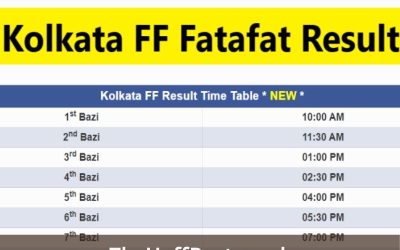Which of the following is true of security classification guides
Security Classification Guides
What is a good physical security practice when using a password-protected email account to store classified or controlled information?
The unauthorized disclosure of Top Secret information reasonably could be expected to cause exceptionally grave damage to national security. This information must be protected with strict safeguarding measures and special handling caveats. Here we will discuss about: Which of the following is true of security classification guides ?
Also Read: which of the following activities constitutes engagement in research
They broadly describe the overall classification of a program or system
A Security Classification Guide (SCG) provides precise, comprehensive guidance for classifying sensitive DoD information. It specifies the level of protection for specific system, plan, program, project, or weapon system elements and describes reasons for and duration of classification. It is based on policy and approved by the cognizant original classification authority.
SCGs are a central component of the DoD’s information security architecture, which establishes a common framework for classification and labeling. They provide a uniform means of classifying information and ensuring that it is protected properly, and they are also intended to help DoD reduce redundancy and cost.
Generally, the level of damage from the unauthorized disclosure of classified information is the main determining factor in deciding its appropriate classification level. Moreover, the imminence of such damages should also be taken into consideration. This can be a difficult balancing act, especially when the damage is likely to be on a scale comparable to or higher than that of Confidential information.
The SCGs also provide information on the duration of the classification of a piece of classified information, and the conditions that would warrant its downgrading or declassification. The duration of a classification is defined at the time it is originally classified, and it may not be changed except by the original classification authority or an individual delegated that authority.
Each portion of a document containing classified information must be marked to indicate its classification level, or that it is unclassified. This includes the subject line, headers, summaries, and tables or graphics. Each portion must be clearly identified by the proper code: TS for Top Secret; S for Secret; or C for Confidential. The entire document must also be clearly labeled with its overall classification, which should be placed at the top and bottom of all pages, including the cover.
While it is important to use SCGs when identifying the classification level of an item, it is equally important to understand the purpose and limitations of these guidelines. If the SCGs are not used properly, they may mislead authorized holders of classified information into believing that certain types of information need less protection than they actually do. This can lead to the unnecessary release of sensitive information.
They provide guidance on reasons for and duration of classification
A security classification guide can help you understand the reasons for and duration of classified information. The guidance may also describe access controls that should be used to protect the classified information. It should also describe how the information can be downgraded to an unclassified level. This is important because classified information that is no longer classified can be used by adversaries to develop countermeasures against us.
One of the primary reasons for classified information is to prevent unauthorized disclosure by adversaries. This can happen in a variety of ways, including through espionage and mistakes by the possessor of the information. Classification is an important protection against this threat, but it is not a substitute for proper handling of the information.
The duration of classified information can be determined by analyzing the need for that classification and the benefits that will result from its retention. The duration of classified information can also be based on the expected extent of dissemination. For example, a document with Top Secret classification might be expected to be shared with 10,000 people. This would greatly increase the probability of unauthorized disclosure and should be considered before assigning that classification to the document.
Similarly, the duration of classified information can be based on an event that could occur. For example, the plans for an operation might be highly classified before and during the operation, but after the operation is over, those classified documents should probably be declassified. In addition, the duration of classified information can be triggered by an occurrence that could cause damage to national security.
The duration of classified information can also be triggered by the need to maintain confidentiality when sharing the information. This information might be shared with authorized individuals, but should not be distributed without proper authorization. Typically, this type of information is marked with a special control notice that says that it must be kept confidential. The duration of classified information can also be reduced when the original classification authorities are no longer in office. In this case, the duration of classified information can be reduced by incorporating the classified information into a new document. This is known as derivative classification.
They are based on Executive Order 12958
The United States government classifies national security information that must be protected from unauthorized disclosure. This process includes labeling the information with an appropriate classification level and implementing access controls to limit the dissemination of the information to authorized individuals. The government also imposes penalties on those who disclose classified information in violation of established rules. Government employees can challenge the classification of a particular piece of information through established agency procedures that protect them from retaliation and provide an opportunity to have their concerns reviewed by an impartial official or panel. Contractors can appeal such decisions through their respective government contracting authorities.
A security classification guide (SCG) is a document that contains instructions on the derivative classification of systems, plans, programs, projects, or missions. It provides guidance on the reasons for and duration of classification, and identifies the original classifier by name or personal identifier and position. It also cites justification for the information’s classification, including its national security sensitivity, impact on U.S. foreign policy and military strategies, or the risks of its unauthorized disclosure.
Generally, the SCG is placed in the center of a page near the bottom. It includes the following lines:
(1) a “Classified by” line that identifies the original classification authority by name or personal identifier and position. (2) a “Reasons” line that cites one of the seven approved classification categories specified in Executive Order 12958. (3) a “Declassify on” line that indicates a date or event at which the information will no longer require protection, if applicable. (4) A 50X1-HUM or 50X2-WMD marking indicating that the information is controlled by the Department of Defense.
The duration of a SCG’s classified status may vary depending on the type of information and the consequences of its unauthorized disclosure. For example, the unauthorized disclosure of top secret information could cause exceptional damage to the national security. The SCG must be updated to reflect changes in the sensitivity of the information and the risk of its unauthorized disclosure. If the duration of a SCG is not updated, it may be necessary to reclassify the information.
They are based on policy
Security classification guides are based on policy and establish the guidelines for classifying information that must be protected from unauthorized disclosure. They also describe the reasons for and duration of classification. Security classification guides should be reviewed regularly to promote consistency and accuracy in classified information markings. They should be updated as necessary to reflect changes in policies or practices. They should also be reviewed by the OCA before they are issued and after each subsequent update.
The OCA is responsible for developing and maintaining classification guidance and identifying the level of protection required for specific information elements. The OCA is also the person who assigns the appropriate security markings to a document or document element. The OCA must be familiar with all DoD and agency classification policy and procedures.
A security classification guide (SCG) is an instruction that identifies the level of protection for specific system, plan, program, or project elements of information. The SCG also includes: o Classification levels o Reasons for classification o Duration of classification
If the SCG is not used by the information creator, the individual must apply the correct security markings to the documents or portions of the document containing classified information. The information must be clearly marked and clearly identified as having been derived from the SCG, including a reference to the SCG. The SCG should contain the OCA’s name and contact information to allow for inquiries regarding the SCG.
SECRET is the highest level of classification. It applies to information that could cause exceptionally grave damage to national security if compromised. It is typically applied to the most sensitive weapon systems design data and intelligence information. The SECRET banner marking should always be accompanied by the appropriate lower level of classification and the duration of the information’s classified status.
If you have a significant concern about the classification of information, you should report it to your facility security manager or the USD(I&S). Do not file a formal classification challenge without first seeking a second opinion from an alternate clearance holder who has a need-to-know for the classified topic. This will help resolve the issue much more quickly than a formal classification challenge. To know more about: Which of the following is true of security classification guides just follow us.











